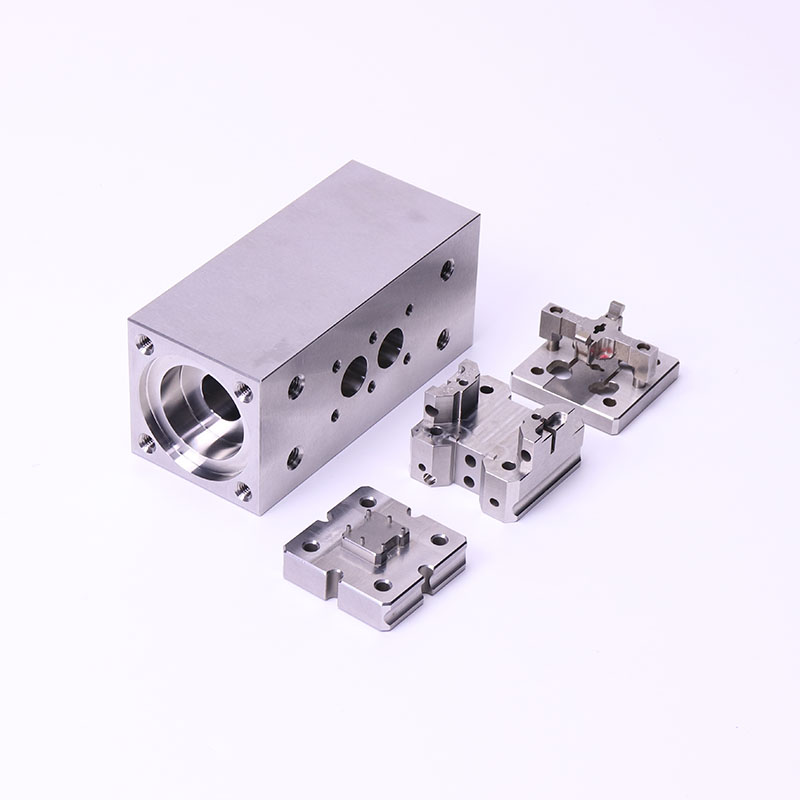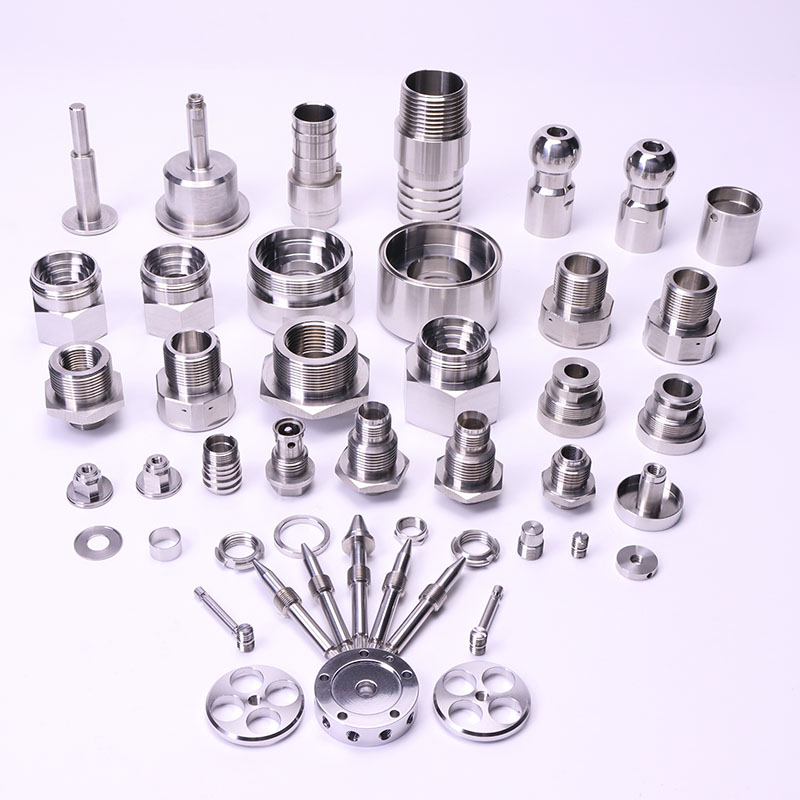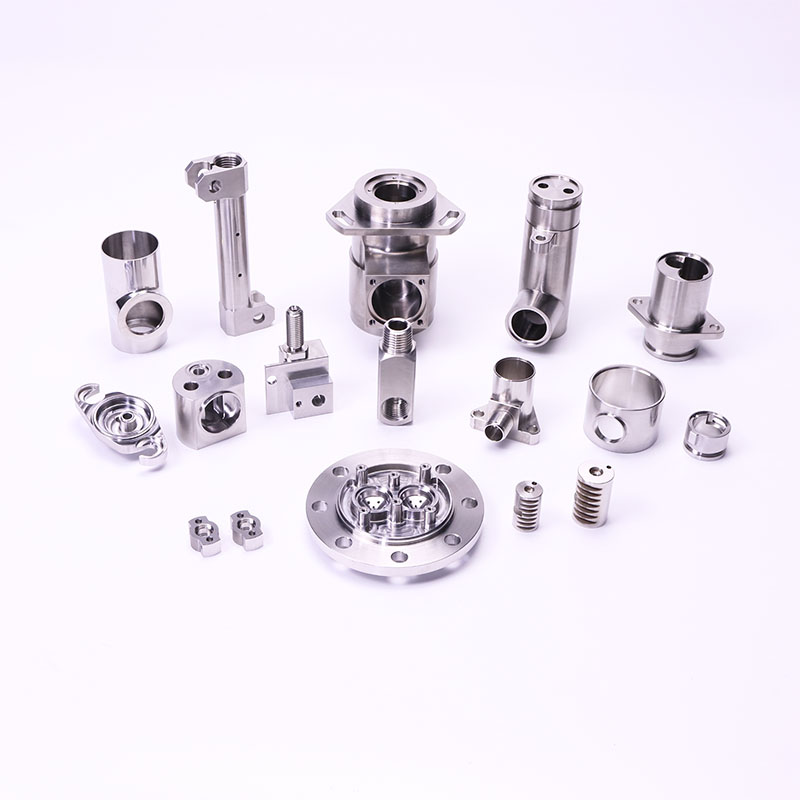Abstract
This article delves into the fascinating realm of near-α titanium alloy forging, focusing on the crucial aspect of clear grain formation. It elucidates the mechanisms behind this phenomenon and the significance of understanding it for the aerospace industry. By referring to relevant research, such as "近 a 型钛合金航空锻件宏观清晰晶形成机理及预测模型", we aim to provide a comprehensive understanding of this complex topic to a wider audience.
This article delves into the fascinating realm of near-α titanium alloy forging, focusing on the crucial aspect of clear grain formation. It elucidates the mechanisms behind this phenomenon and the significance of understanding it for the aerospace industry. By referring to relevant research, such as "近 a 型钛合金航空锻件宏观清晰晶形成机理及预测模型", we aim to provide a comprehensive understanding of this complex topic to a wider audience.
1. Introduction
In the world of aerospace engineering, the quality of materials used is of utmost importance. Titanium alloys, especially near-α types, have emerged as a vital material due to their excellent mechanical properties. However, a phenomenon known as clear grain formation has been a subject of intense study. This article will explore this topic in detail, shedding light on its implications and the research findings related to it.
In the world of aerospace engineering, the quality of materials used is of utmost importance. Titanium alloys, especially near-α types, have emerged as a vital material due to their excellent mechanical properties. However, a phenomenon known as clear grain formation has been a subject of intense study. This article will explore this topic in detail, shedding light on its implications and the research findings related to it.
2. The Wonders of Near-α Titanium Alloys
2.1 Composition and Properties
Near-α titanium alloys are composed of a unique combination of elements that give them their remarkable strength, lightweight nature, and resistance to corrosion. These alloys typically contain a significant amount of α-phase titanium, along with other alloying elements. For example, in TA15 titanium alloy, the microstructure consists of primary equiaxial α phase, lamellar α phase, and residual β phase. The 相变点 (phase transformation point) is around 995°C. This precise composition and microstructure contribute to its suitability for aerospace applications where high strength and reliability are crucial.
2.2 Applications in Aerospace
The aerospace industry demands materials that can withstand extreme conditions. Near-α titanium alloys are used in various components such as engine parts, airframe structures, and landing gear. Their ability to maintain structural integrity at high temperatures and under heavy loads makes them an ideal choice. For instance, in some advanced fighter jets, the use of these alloys in critical components has significantly enhanced the aircraft's performance and safety.
2.1 Composition and Properties
Near-α titanium alloys are composed of a unique combination of elements that give them their remarkable strength, lightweight nature, and resistance to corrosion. These alloys typically contain a significant amount of α-phase titanium, along with other alloying elements. For example, in TA15 titanium alloy, the microstructure consists of primary equiaxial α phase, lamellar α phase, and residual β phase. The 相变点 (phase transformation point) is around 995°C. This precise composition and microstructure contribute to its suitability for aerospace applications where high strength and reliability are crucial.
2.2 Applications in Aerospace
The aerospace industry demands materials that can withstand extreme conditions. Near-α titanium alloys are used in various components such as engine parts, airframe structures, and landing gear. Their ability to maintain structural integrity at high temperatures and under heavy loads makes them an ideal choice. For instance, in some advanced fighter jets, the use of these alloys in critical components has significantly enhanced the aircraft's performance and safety.
3. The Enigma of Clear Grain Formation
3.1 What is Clear Grain?
Clear grain refers to a distinct microstructure observed in near-α titanium alloy forgings. In a study titled "近 a 型钛合金航空锻件宏观清晰晶形成机理及预测模型", it was found that clear grain regions and fuzzy grain regions both exhibited a dual-phase microstructure. However, the clear grain regions were characterized by larger original β grains and a lower content of αp, with some even having coarse clusters of lamellar α phase.
3.2 Critical Criteria for Clear Grain Formation
Research has established that the critical condition for the appearance of clear grains is related to the size of the original β grains. In the case of TA15 titanium alloy, when the original β grain size exceeds a certain threshold (dβ≥50μm), clear grains begin to form. This discovery has been a significant breakthrough in understanding the factors influencing clear grain formation.
3.3 Impact on Material Properties
The presence of clear grains can have a profound impact on the mechanical properties of the alloy. It can affect parameters such as tensile strength, fatigue resistance, and ductility. In some cases, clear grains may lead to a reduction in the overall performance of the component, making it crucial to study and control this phenomenon.
3.1 What is Clear Grain?
Clear grain refers to a distinct microstructure observed in near-α titanium alloy forgings. In a study titled "近 a 型钛合金航空锻件宏观清晰晶形成机理及预测模型", it was found that clear grain regions and fuzzy grain regions both exhibited a dual-phase microstructure. However, the clear grain regions were characterized by larger original β grains and a lower content of αp, with some even having coarse clusters of lamellar α phase.
3.2 Critical Criteria for Clear Grain Formation
Research has established that the critical condition for the appearance of clear grains is related to the size of the original β grains. In the case of TA15 titanium alloy, when the original β grain size exceeds a certain threshold (dβ≥50μm), clear grains begin to form. This discovery has been a significant breakthrough in understanding the factors influencing clear grain formation.
3.3 Impact on Material Properties
The presence of clear grains can have a profound impact on the mechanical properties of the alloy. It can affect parameters such as tensile strength, fatigue resistance, and ductility. In some cases, clear grains may lead to a reduction in the overall performance of the component, making it crucial to study and control this phenomenon.
4. Unraveling the Mechanisms Behind Clear Grain Formation
4.1 The Role of Temperature
Temperature plays a pivotal role in clear grain formation. As the temperature increases during the forging process, the αp phase dissolves into the β grains, causing them to grow larger. Additionally, dynamic phase transformations occur, where α→β, further contributing to the coarsening of the β grains. This phenomenon is more pronounced at higher temperatures, as demonstrated in thermal simulation experiments.
4.2 Influence of Strain Rate
The strain rate also affects clear grain formation. A lower strain rate leads to more α phase transforming into β phase, resulting in larger new β grains. Moreover, slow strain rate deformation promotes the growth of β grains, increasing the likelihood of clear grain formation. This relationship between strain rate and clear grain formation has been quantified through extensive experimentation.
4.3 Effect of Deformation Amount
The amount of deformation during forging is another crucial factor. As the deformation increases, the dynamic phase transformation generates more β phase, leading to larger β grains and a higher probability of clear grain formation. This understanding of the role of deformation amount has provided valuable insights into controlling the microstructure of the alloy.
4.1 The Role of Temperature
Temperature plays a pivotal role in clear grain formation. As the temperature increases during the forging process, the αp phase dissolves into the β grains, causing them to grow larger. Additionally, dynamic phase transformations occur, where α→β, further contributing to the coarsening of the β grains. This phenomenon is more pronounced at higher temperatures, as demonstrated in thermal simulation experiments.
4.2 Influence of Strain Rate
The strain rate also affects clear grain formation. A lower strain rate leads to more α phase transforming into β phase, resulting in larger new β grains. Moreover, slow strain rate deformation promotes the growth of β grains, increasing the likelihood of clear grain formation. This relationship between strain rate and clear grain formation has been quantified through extensive experimentation.
4.3 Effect of Deformation Amount
The amount of deformation during forging is another crucial factor. As the deformation increases, the dynamic phase transformation generates more β phase, leading to larger β grains and a higher probability of clear grain formation. This understanding of the role of deformation amount has provided valuable insights into controlling the microstructure of the alloy.
5. Predicting Clear Grain Formation: A Breakthrough in Modeling
5.1 The Development of the Prediction Model
Scientists have developed a prediction model for clear grain formation based on the classic dynamic recrystallization grain size model. By conducting a series of experiments on TA15 titanium alloy, the parameters of the model were determined. The resulting model, dβ = 1.75×1016×ε0.696×\dot {ε}-0.238×exp (-3.43×105/RT), has shown a high degree of accuracy, with a correlation coefficient R = 0.94 and an average relative error absolute value ARRE = 11.6% between the experimental values and the predicted values.
5.2 Visualizing the Microstructure
Using this prediction model, it is now possible to visualize the distribution of the microstructure in TA15 titanium alloy forgings. By embedding the model into finite element simulations of 等温压缩 (isothermal compression) and 非等温锻造 (non-isothermal forging) processes, researchers have been able to predict the occurrence of clear grains. The simulated results have been found to be in good agreement with the experimental results, providing a powerful tool for controlling and optimizing the forging process.
5.1 The Development of the Prediction Model
Scientists have developed a prediction model for clear grain formation based on the classic dynamic recrystallization grain size model. By conducting a series of experiments on TA15 titanium alloy, the parameters of the model were determined. The resulting model, dβ = 1.75×1016×ε0.696×\dot {ε}-0.238×exp (-3.43×105/RT), has shown a high degree of accuracy, with a correlation coefficient R = 0.94 and an average relative error absolute value ARRE = 11.6% between the experimental values and the predicted values.
5.2 Visualizing the Microstructure
Using this prediction model, it is now possible to visualize the distribution of the microstructure in TA15 titanium alloy forgings. By embedding the model into finite element simulations of 等温压缩 (isothermal compression) and 非等温锻造 (non-isothermal forging) processes, researchers have been able to predict the occurrence of clear grains. The simulated results have been found to be in good agreement with the experimental results, providing a powerful tool for controlling and optimizing the forging process.
6. Real-World Applications and Case Studies
6.1 Aerospace Industry Success Stories
In the aerospace industry, the understanding and control of clear grain formation have led to significant improvements in component quality. For example, a leading aerospace manufacturer was able to reduce the incidence of clear grains in their titanium alloy forgings by implementing the insights gained from research on clear grain formation mechanisms and the use of prediction models. This resulted in enhanced performance and reliability of their aircraft components, ultimately contributing to the safety and efficiency of their fleets.
6.2 Lessons from Other Industries
Similar principles of microstructure control have been applied in other industries as well. In the automotive industry, for instance, the study of grain formation in metal alloys has helped in optimizing the manufacturing process of engine components. By understanding how factors such as temperature, strain rate, and deformation amount affect the microstructure, manufacturers have been able to produce components with improved mechanical properties, leading to better engine performance and fuel efficiency.
6.1 Aerospace Industry Success Stories
In the aerospace industry, the understanding and control of clear grain formation have led to significant improvements in component quality. For example, a leading aerospace manufacturer was able to reduce the incidence of clear grains in their titanium alloy forgings by implementing the insights gained from research on clear grain formation mechanisms and the use of prediction models. This resulted in enhanced performance and reliability of their aircraft components, ultimately contributing to the safety and efficiency of their fleets.
6.2 Lessons from Other Industries
Similar principles of microstructure control have been applied in other industries as well. In the automotive industry, for instance, the study of grain formation in metal alloys has helped in optimizing the manufacturing process of engine components. By understanding how factors such as temperature, strain rate, and deformation amount affect the microstructure, manufacturers have been able to produce components with improved mechanical properties, leading to better engine performance and fuel efficiency.
7. Conclusion
In conclusion, the study of clear grain formation in near-α titanium alloy forgings is a crucial area of research with far-reaching implications for the aerospace and other industries. Through a comprehensive understanding of the mechanisms behind clear grain formation and the development of accurate prediction models, we are now better equipped to control and optimize the forging process. This not only improves the quality of the final products but also enhances the performance and reliability of the components in which these alloys are used. As research in this field continues to evolve, we can expect further advancements that will drive innovation and progress in the world of materials engineering and manufacturing.
In conclusion, the study of clear grain formation in near-α titanium alloy forgings is a crucial area of research with far-reaching implications for the aerospace and other industries. Through a comprehensive understanding of the mechanisms behind clear grain formation and the development of accurate prediction models, we are now better equipped to control and optimize the forging process. This not only improves the quality of the final products but also enhances the performance and reliability of the components in which these alloys are used. As research in this field continues to evolve, we can expect further advancements that will drive innovation and progress in the world of materials engineering and manufacturing.










